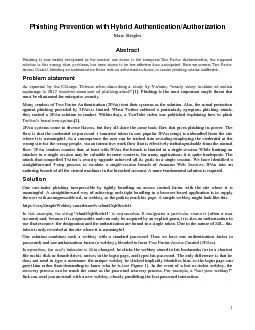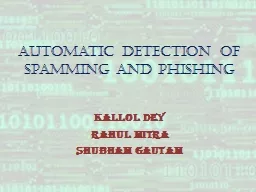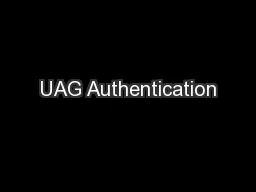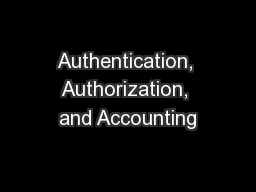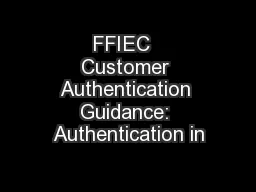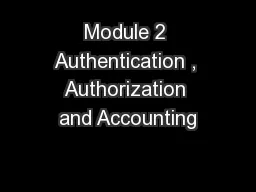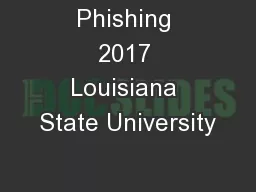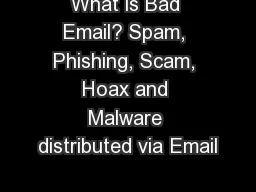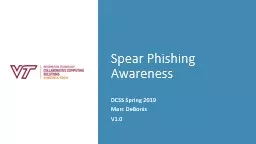PDF-Phishing Prevention with Hybrid Authentication/Authorization
Author : kittie-lecroy | Published Date : 2015-11-26
1 Marc Stiegler Abstract Phishing is now widely recognized as the number one threat to the enterpriseTwo Factor Authentication the supposed solution to this among
Presentation Embed Code
Download Presentation
Download Presentation The PPT/PDF document "Phishing Prevention with Hybrid Authenti..." is the property of its rightful owner. Permission is granted to download and print the materials on this website for personal, non-commercial use only, and to display it on your personal computer provided you do not modify the materials and that you retain all copyright notices contained in the materials. By downloading content from our website, you accept the terms of this agreement.
Phishing Prevention with Hybrid Authentication/Authorization: Transcript
Download Rules Of Document
"Phishing Prevention with Hybrid Authentication/Authorization"The content belongs to its owner. You may download and print it for personal use, without modification, and keep all copyright notices. By downloading, you agree to these terms.
Related Documents

